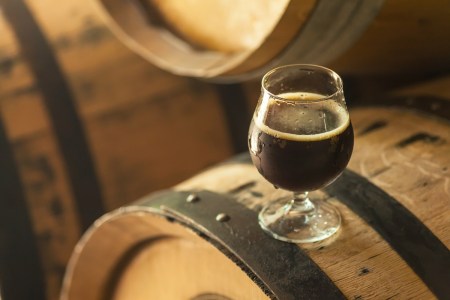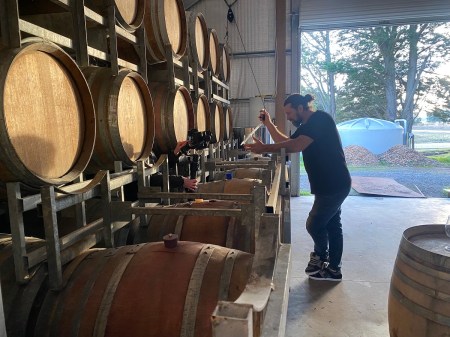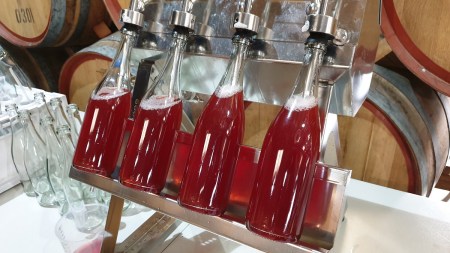
In her continuing series of Senses Working Overtime articles, sensory analyst Briony Liebich from Flavour Logic delves into the rich and exotic world of barrel aged beers and the flavours they deliver.
Whisky barrel aged imperial stout. Smoked rye Baltic porter. Apricot wild ale. Belgian Blonde aged in Chardonnay barrels. A serious beer drinker wouldn’t blink twice seeing these on offer, but what really makes these beers so intriguing? Experimentation with various styles and wood types has led to incredible innovation and collaboration across the beer, spirits and wine industry.
Brewers are using wood either as a flavour enhancer or storage vessel. Being a natural product with many variables, when combined with constant beer changes, it is an unpredictable process requiring trust and patience. The most impressive beers are aged for months, if not years, before release.
Critical factors to success are knowing your beer’s ageing potential and keeping good brewing records. Next is getting hold of suitable barrels. Whatever the previous contents you will ideally know the origin, condition, and cleanliness of the barrel.
In barrel ageing, oxygen is no longer an enemy of beer aiding positive flavour development with careful management. The time beer spends in barrel depends on the desired beer flavour profile and storage conditions. Smaller barrels stored at warmer temperatures cause more rapid development. Warmer temperatures also lead to evaporation so it’s common to top up barrels with fresh beer during ageing.

Knowing when to blend and pack is an art form as every barrel is different. Initial taste tests occur after three to five months, then happen regularly until deemed ready. To make sampling easier, a small sample port sealed with a nail is placed in the barrel end to avoid exposing beer to air unnecessarily. Blending trials show what’s on offer so brewers can fit a certain flavour profile. Barrel contents are then put into a blending tank where further tweaks can be made before packaging.
What type of wood?
Oak is the wood of choice, but other types are being used to continually push boundaries. Whisky and bourbon are popular having been used since the early 1990s by American brewers. The spirit flavours meld harmoniously with malt-forward styles like imperial stout, barley wine and Scotch ale. Spirit barrels have added benefits of residual alcohol which kills off bugs that can cause sour, funky or farmyard flavours. Breweries near wine regions can choose from red, white and fortified barrels, each of which impart different characters along with the potential microflora left from the wine fermentation process. French or American oak, barrel size, seasoning and toasting process all influence flavour type and intensity.
What styles and flavours can you expect?
Barrel ageing can transform the contents into a totally different beverage. You get one-off product profiles, added richness and artistic flair like adding extra “spice”. Many factors determine the flavours and rate of change. Newer, fresher barrels bring higher levels of toasty oak and sweet spices while older oak transfers more subtle flavours over time. Malty beers with higher alcohol ageing in whisky, bourbon or rum barrels can pick up flavours like vanilla, caramel, coconut, chocolate, smoke and spice. Any tannins or hop bitterness in bigger beer styles are tamed by the natural oxidation process producing mellowed palates. Note that residual spirit in barrels can increase alcohol resulting in fuller-bodied, warming sensations.
Sours, fruit beers and Belgian ales work nicely in wine barrels where flavour transfer is more neutral than spirit barrels, bringing grape varietal character and possibly colour. Wide ranging flavour development includes stewed or dried fruit, funky tartness, pickles, mild vinegar, earthy and farmyard. Intentionally sour beers take much longer to develop, as they ride the ebb and flow of microbial activity and gentle oxygenation.

Is it worth the effort?
Not all wood ageing is smooth sailing. What some consider to be an off-flavour is another’s complexing character. Remember to keep an open mind and be aware of potentially offensive flavours like excess vinegary acetic acid, musty or papery from over-exposure to oxygen or intense barnyard, horsey flavours from Brettanomyces.
The brews that succeed do so because the brewer understands harmony and subtlety, not simply a leading flavour or a sensory overload. Beer drinkers are rewarded with distinctive products showing amazing depth of flavour and unparalleled richness. While brewers continue to roll out the barrels and beer lovers seek out new flavours, the industry benefits from further diversification of beer offerings.
You can read more about the patient art of barrel fermenting and ageing beer in a recent feature of ours here.
Briony’s sensory column appears in every issue of Beer & Brewer. In our current spring edition she looks at malt’s key structural role in beer and how we can boost our descriptive skills for malt-derived sensory properties. Subscribe here.

